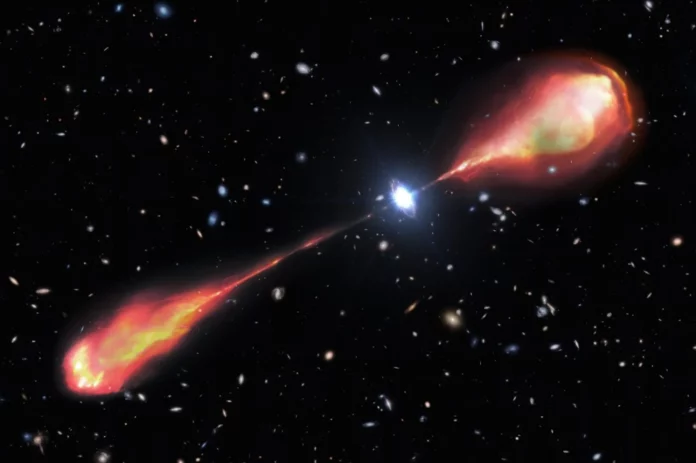Astronomers have discovered a massive radio jet in the early Universe, which they say is the largest known from that era.
The jet is at least 200,000 light-years long, twice the width of the Milky Way. It was formed when the age of the Universe was less than 10% of its current age, approximately 13.77 billion years. Although the jet is not the largest in the known history of the Universe, its size and considerable age raises questions about the source of these jets – some of the most exotic objects in the Universe. The team’s study describing the jet is published today in The Astrophysical Journal Letters.
“It is believed that perhaps the most powerful jets are created from the most massive black holes, or black holes that intensively accumulate material near the theoretical limit,” said Annik Glaudemans, an astronomer at NOIRLab and lead author of the study. “So we might have expected that this newly discovered jet might contain an extraordinary black hole, but that was not the case.”
Radio jets are common objects in our nearby universe, but much rarer – or at least less well known – in the early universe. The recently studied jet is emitted from a quasar, or energetic galactic nucleus, called J1601+3102. Astronomers first identified the jet using data from the Low Frequency Array (LOFAR) telescope, and details of the jet and the source quasar were gathered from observations with the Gemini Near Infrared Spectrograph (GNIRS) and the Hobby Eberly Telescope.
The jet, seen below, is erupting from a quasar, a reddish blob, when the universe was less than 1.2 billion years old. The quasar in question is relatively small – only 450 million times the mass of our Sun. Thus, the power of the jet is a surprise compared to its relatively modest host.









